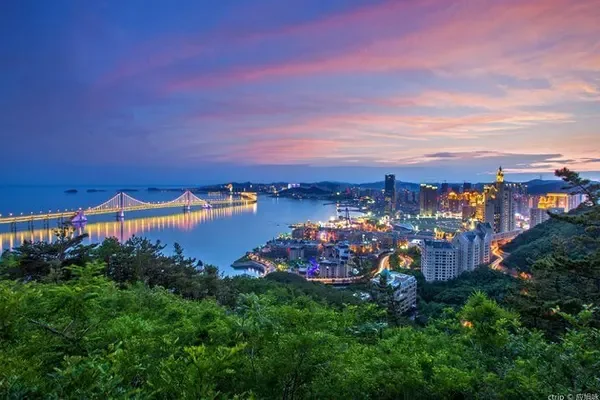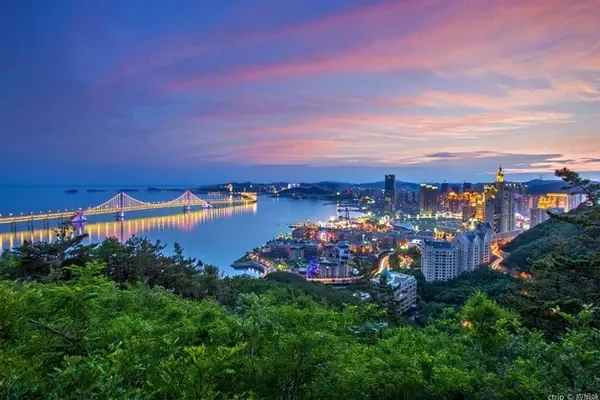Revisit the Forbidden City in Beijing "20210318"
On March 18, 2021, the weather was overcast. The four of us traveled from Huilongguan to the Forbidden City by subway.
This is my third visit to the Forbidden City. The first time was in March 1985, when I came to Beijing on a business trip and visited the Forbidden City by the way. At that time, the entrance fee for the Forbidden City was: 1 dime/per person
The second time was in April 2014. The peak season of tickets is: 60 yuan/person, (April 1--October 31), and the off-season is: 40 yuan/person, (November 1- ---March 31).
Today is the third time to visit the Forbidden City. Because it is cloudy today and it is the off-season, there are very few people visiting the Forbidden City. When I visited the Forbidden City for the second time, there were so many people, it was very difficult to take pictures in one place.











Due to the epidemic this year, to visit the Forbidden City, you need to book tickets online one day in advance, and tickets are not sold on site. The Tiananmen Square floor is not yet open, so you cannot climb it. When will the opening be subject to further notice.
We arrived at Tiananmen Square at 11:30 and took a few photos. Enter the Forbidden City at 12 o'clock.
















Before entering the Forbidden City, you need to pre-check and activate the tickets booked online at the ticket office, and show your Beijing health code and ID card. Then, you can go to the ticket gate to show your ID card to enter the Forbidden City.










The Forbidden City in Beijing is the royal palace of the Ming and Qing dynasties in China. It used to be called the Forbidden City and is located in the center of the central axis of Beijing. The Forbidden City in Beijing is centered on three main halls, covering an area of 720,000 square meters, with a construction area of about 150,000 square meters. There are more than 70 palaces of different sizes and more than 9,000 houses.
The Forbidden City in Beijing started construction in the fourth year of Yongle (1406), Emperor Chengzu of the Ming Dynasty. It was built on the basis of the Forbidden City in Nanjing, and it was completed in the eighteenth year of Yongle (1420). It is a rectangular city, 961 meters long from north to south, 753 meters wide from east to west, surrounded by walls 10 meters high, and a moat 52 meters wide outside the city. The buildings in the Forbidden City are divided into two parts: the outer court and the inner court. The center of the Outer Dynasty is the Hall of Supreme Harmony, the Hall of Central Harmony, and the Hall of Preserving Harmony, collectively referred to as the Three Great Halls, where the state holds grand ceremonies. The center of the inner court is Qianqing Palace, Jiaotai Palace, and Kunning Palace, collectively referred to as the Housan Palace, which is the main palace where the emperor and empress live.
The first thing to enter the Forbidden City is: Meridian Gate. It is the main entrance of the Forbidden City.

The place where the emperor issued edicts and ordered expeditions.
The second one is: Taihe Gate.








It is the largest palace gate in the Forbidden City and also the main gate of the outer palace. Taihe Gate was the place where "the royal gate listened to government" in the Ming Dynasty. The emperors in the early Qing Dynasty also listened to politics and gave banquets at Taihe Gate.











Hall of Supreme Harmony.
The third is: the Hall of Supreme Harmony. Commonly known as "Jinluan Temple", it was built in the eighteenth year of Yongle (1420) in the Ming Dynasty and is called Fengtian Temple. In the forty-first year of Jiajing (1562), it was renamed Huangji Hall. In the second year of Shunzhi in the Qing Dynasty (1645), it was renamed today. It is the place where the emperor holds a grand ceremony. Since its completion, it has been burned down many times and rebuilt many times. What we see today is the shape after reconstruction in the 34th year of Kangxi in the Qing Dynasty (1695).
In March 1985, I went to the Forbidden City to see the Hall of Supreme Harmony for the first time. Visitors can visit the Hall of Supreme Harmony, but the emperor's "dragon chair" is blocked with a red rope, and the "dragon chair" is not allowed.
I went to the Forbidden City for the second time in April 2014. The Hall of Supreme Harmony is not allowed to enter, but you can go up the steps to the window and look inside the "Dragon Chair", and you can still see it.
When I visited the Forbidden City this time, I started to block the steps with red ropes, and even the steps were not allowed to go up. If I want to see the "Dragon Chair", I can only go under the steps. From a distance, I can't see anything inside.






















The fourth one is: Zhonghe Hall. It is the place where the emperor took a break and practiced etiquette before going to the Hall of Supreme Harmony to hold a grand ceremony. Before going to the Hall of Supreme Harmony, the emperor stopped here for a while, accepted the salutes of the cabinet ministers and officials of the Ministry of Rites, and then entered the Hall of Supreme Harmony to hold the ceremony.

















Finally: the Hall of Preserving Harmony. Baohe Hall (Jinshen Hall, Jianji Hall) is also one of the three halls of the Forbidden City, behind the Hall of Zhonghe. The Hall of Preserving Harmony is the place where the emperor gives a banquet to the princes and princes of foreign vassals every New Year's Eve. The Palace of Preserving Harmony is also the place where the imperial examinations are held.






Go down from here to the "Hall of Clocks"

















We bought tickets for the "Treasure Hall", so we turned right from the Hall of Preservation and went down the steps to the "Treasure Hall".
The Treasure Museum of the Forbidden City in Beijing opened in 1958. It is one of the important perennial exhibition halls of the Palace Museum. Together with the Hall of Clocks and Watches, it mainly displays the treasures of Qing Dynasty court cultural relics, and together with the halls of calligraphy and painting, ceramics, bronze, and treasures, and forms the exhibition system of the Forbidden City together with the halls of calligraphy, painting, ceramics, bronze, and crafts. The display system complements the original display of ancient buildings. The Treasures of the Palace Museum is located in the east of the Palace Museum in Beijing. The Treasure Hall is a treasure house with gems of various colors, gleaming gold and silver vessels, pearls and emeralds, as well as golden silk phoenix crowns, ivory and jade carvings, all kinds of treasures are unparalleled in the world; Large jade carvings.
Before arriving at the "Treasure Hall", there is the Forbidden City Restaurant and the Archery Tower.



After entering "Zhen Bao Ge", the first thing you see is: "Nine Dragon Wall".




The Nine Dragon Wall is located outside the Huangji Gate in the Ningshou Palace District of the Forbidden City. The wall is 29.4m long, 3.5m high, and 0.45m thick. It is a single-sided glazed screen wall built against the palace wall. It was fired when the Ningshou Palace was rebuilt in the thirty-seventh year of Qianlong (1772). The Nine-Dragon Wall in the Forbidden City, together with the Nine-Dragon Wall in Datong, Shanxi Province, and the Nine-Dragon Wall in Beihai Park, Beijing, are collectively known as the "Three Great Nine-Dragon Walls in China".
Then, enter: Huangji Gate, and you will arrive at: Huangji Hall.













Let's enter: the jewelry hall, and enjoy the emerald and jade artworks of our country in ancient times.















Going further inside are: Hall of Yangxing,



Changyin Pavilion, Le Shoutang, Yihexuan, and Zhenfei Well. The last is the Royal Garden.













































This is the end of the Forbidden City. There should be other places. We have not gone there. We have been visiting for 3 hours. We are all over 60 years old. Now our backs are sore and our legs are hurting. We decided to stop here. From the north: Shenwu Gate exits the Forbidden City.
A few feelings:
1. Now the Forbidden City pays more and more attention to historical relics, especially the Hall of Supreme Harmony. Tourists want to see the true appearance of the Hall of Golden Luan, but there is no way to see it.
2. To travel to the Forbidden City, it is recommended to visit in the off-season, when there are few people. The Forbidden City is dominated by buildings and treasures, not flowers and plants.
3. Half-price tickets for seniors over 60 years old.
4. If you want to see the "Nine Dragon Wall", you must buy tickets for the "Treasure Hall", because the Nine Dragon Wall is inside the Treasure Hall. Tickets for Treasure Hall: 10 yuan/person.
Written in Beijing on March 21, 2021

